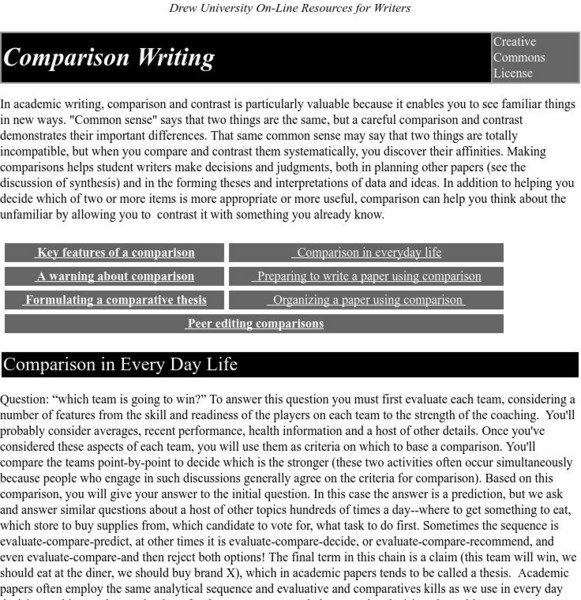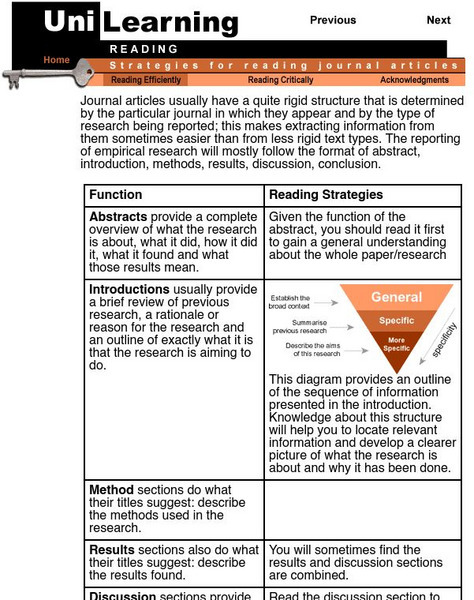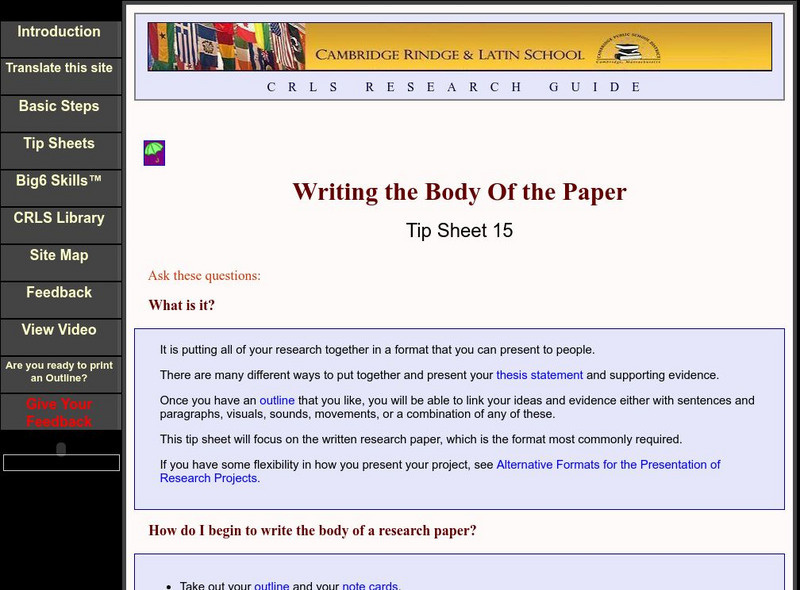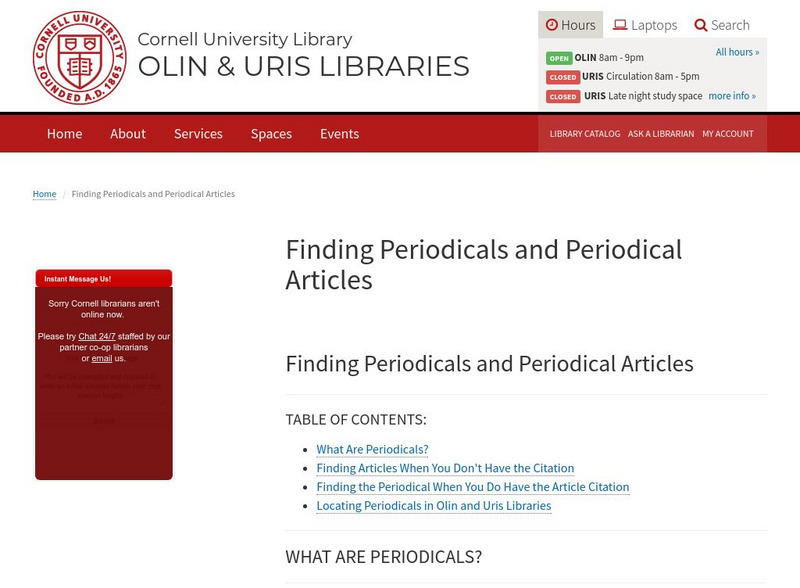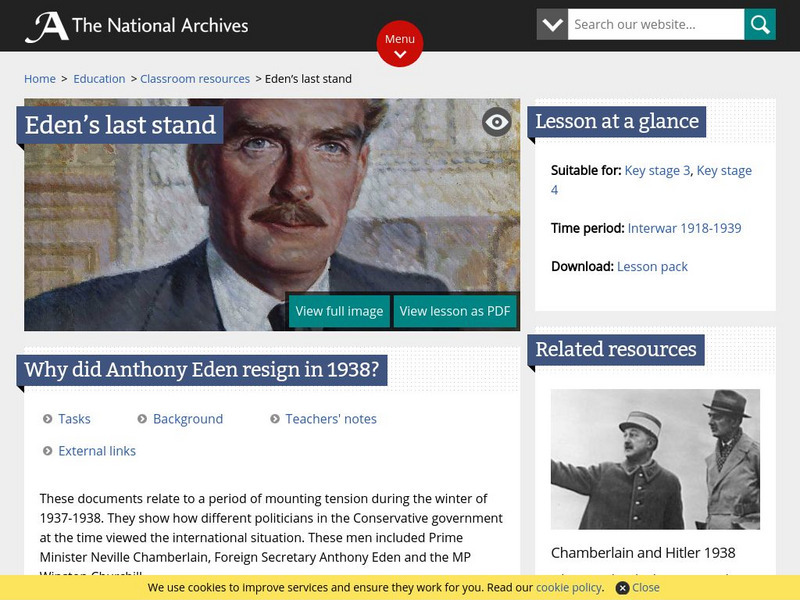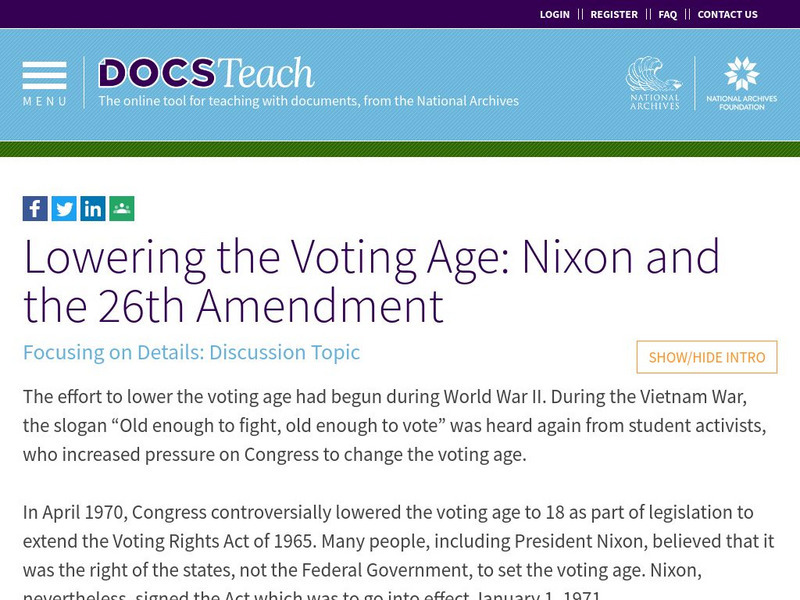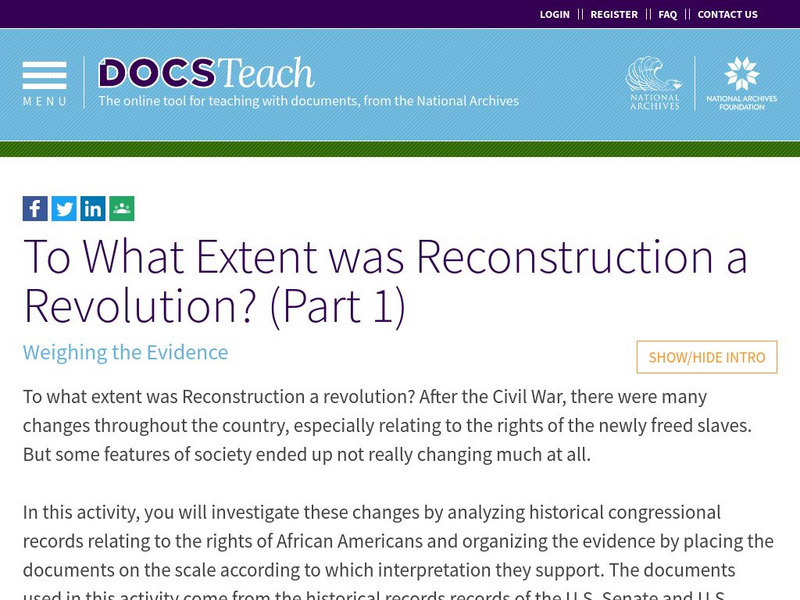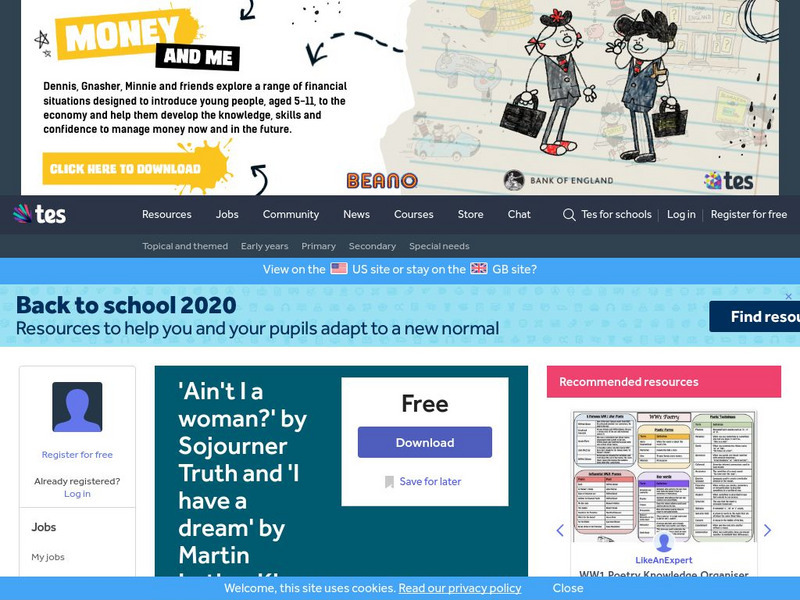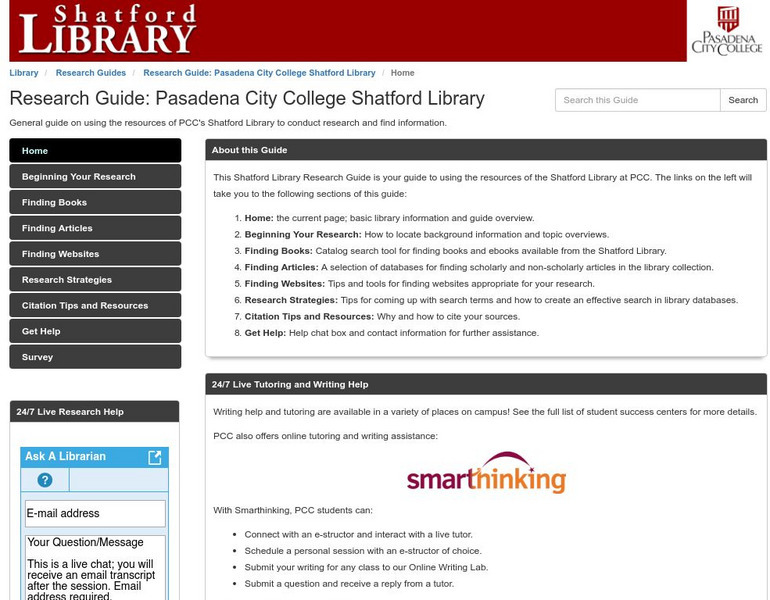Other
Yukon College: Reading & Writing Academic Articles [Pdf]
This detailed guide provides background information about the purpose and structure of journal articles, then walks the reader step-by-step through the reading process. Additional resources are included.
Other
Drew University: Resources for Writers Comparison Writing
Sections of this site include key features of the comparison essay, comparisons in daily life, formulating a thesis, preparing to write, and organizing a comparison essay. The site also includes a paragraph of caution when writing about...
Grammarly
Grammarly Handbook: Headings
This page focuses on the use of headings in a paper. The layout of the headings and subheadings should be determined before beginning the paper to make it easier to read and more attractive. Most important is to be consistent with...
Grammarly
Grammarly Handbook: Where to Find Information
This page focuses on where to find information needed for writing papers: the library or the internet. It offers tips for using search engines and key words.
Grammarly
Grammarly Handbook: Primary, Secondary, or Tertiary Resources
Definitions and examples of primary, secondary, and tertiary resources.
Grammarly
Grammarly Handbook: Good or Bad Resource?
This page focuses on how to evaluate resources; it establishes criteria for determining good and bad resources. Primary resources are always good, but secondary and tertiary ones need to be evaluated more closely.
Other
Uni Learning: Strategies for Reading Journal Articles
Clear explanation of how journal articles tend to be structured, as well as tips for extracting information from each part. Includes sample, color-coded exercises.
Other
Bayou State Periodical Index
Focused on periodicals pertaining to Louisiana, this online index covers even obscure publications such as alumni newsletters, and occasional offerings of non-profit organizations.
Other
Georgia Perimeter College: Learning and Tutoring Center: Communications Handouts
This index provides links to educational resources on various English topics. Some topics included are related to punctuation, parts of speech, usage, different types of writing, and analytical questions for various genres of literature.
Library and Archives Canada
Nlc: Defining Primary and Secondary Sources
Libraries and archives hold documents and books that can be used for your research projects. Learn how to divide and identify them into primary and secondary sources in this tutorial.
Cambridge Rindge & Latin School
Cambridge Rindge & Latin School: Writing the Body of a Research Paper
An excellent tip sheet on how to write and create the bulk of a research paper: the body includes in-depth information, examples, as well as links to earlier steps in the process such as thesis statements, notecards, outline,...
University of California
Uc Berkeley Library: Finding Historical Primary Sources
Got a research project? Read this site from the UC Berkeley Library. A great guide on finding the best primary sources for your research. Defines both narrow and broad ideas of primary source, links to online archives of primary sources,...
Cornell University
Cornell University: Finding Periodicals and Periodical Articles
This resource offers a good look at periodicals as a source of information, and offers help for finding articles in a variety of situations.
National Archives (UK)
National Archives Learning Curve: How to Read a Document
This site is a lesson on Document Analysis using a letter written by Anthony Eden to PM Chamberlain in late 1937.
US National Archives
Docsteach: Lowering the Voting Age: Nixon and the 26th Amendment
This activity encourages learners to think critically about the history and importance of the 26th Amendment, that granted the right to vote to American citizens aged eighteen or older.
US National Archives
Docsteach: Documenting Key Presidential Decisions
In this activity, young scholars will identify and analyze documents related to key presidential decisions. Through close examination of the documents, students will determine which president was involved. Young scholars will then...
US National Archives
Docsteach: To What Extent Was Reconstruction a Revolution? (Part 1)
Students will examine several historical congressional records from the Reconstruction period to assess whether they show evidence that the Reconstruction period of American history should or should not be viewed as a revolution. The...
Other
Education Oasis: Compare and Contrast Graphic Organizers
This site contains several downloadable graphic organizers for comparing and contrasting reading topics.
TES Global
Tes: 'Ain't I a Woman?' and 'I Have a Dream'
[Free Registration/Login Required] In this series of activities, students will compare Sojouner Truth's "Ain't I a Woman?" speech with Dr. Martin Luther King, Jr.'s "I Have a Dream Speech". Students will look at literal and implied...
Pasadena City College
Pasadena City College: Shatford Library: Finding Articles
A step-by-step tutorial walks you through various ways of locating magazine and other periodical articles.
US National Archives
The National Archives Experience: Digital Vaults
This interactive website reveals primary sources for the National Archives vaults.
Sophia Learning
Sophia: Comparing and Contrasting Texts
Two PowerPoint presentations and a video [2:57] on comparing and contrasting literary and informational texts as well as how to write a literary analysis. Includes links to external resources.
Other
The Dbq Project
Teach students how to read with understanding, think straight, and write clearly using document-based questions.
Discovery Education
Discovery Education: Your Daily Learning Platform
An index to the Discovery Channel. Find resources for teachers, students, and even parents, from science experiments to math help, to virtual field trips.
![Yukon College: Reading & Writing Academic Articles [Pdf] Unit Plan Yukon College: Reading & Writing Academic Articles [Pdf] Unit Plan](https://d15y2dacu3jp90.cloudfront.net/images/attachment_defaults/resource/large/FPO-knovation.png)
